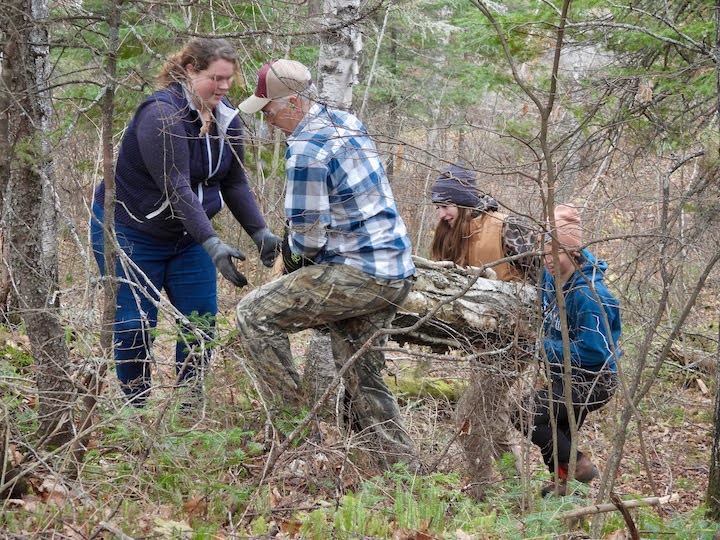With a body full of muscle groups, a major part of our ongoing health is keeping these muscles active and strong.

I’ve never liked strength training, especially with weights.
I know it’s good for me. And I’ve done it in the past. I had to take a semester of strength training during college as part of the phys ed requirements.
In the early 2000s I bought a book that caught my eye: Strong Women Stay Young by Dr. Miriam E. Nelson from Tufts University. After reading it I followed Dr. Nelson’s plan for at-home strength training for a long time. But I eventually quit because…I don’t like strength training!
I figured the running, walking and Pilates I was doing was just going to have to be enough.
At 52, I had to quit running due to hip stiffness and a few other minor injuries. So I joined a gym for the first time in my life in 2017 for the sole purpose of getting in two days of strength training.
After two years of that (and I was faithful to go a couple days most weeks) I didn’t renew my membership because…I don’t like strength training!
Then two years ago I bought the Metabolic Renewal program. That’s the one I’m still doing, most weeks. I can do it from home, each workout is only 15 minutes long, and I can tell it works. It’s a mix of cardio and strength that I add to walking.
I don’t love it, but I know my body needs it! So I’m going to keep working on strength exercises.
Here’s why:
1. Strengthens Our Muscles
“Use it or lose it” is absolutely true when it comes to muscle strength. Weakened muscles shrink and become flabby. Since our muscles support our entire skeletal system, flabby muscles mean flabby support.
Strong muscles mean strong support. This is especially important for a healthy back and for healthy joints.

A physical therapist told me years ago: “The best thing you can do for your back is to have strong stomach muscles.” I recently read something similar about our knees: The best thing for healthy knees is strong quad muscles.
It can be working with weights or exercises that use your own body weight, like squats and push-ups. If it works your muscles, it’s good.
2. Revs Up Our Metabolism
Muscle is active tissue and needs calories to fuel it—even when resting. As our muscles are strengthened, they grow and therefore need more fuel. Theoretically, this should help us maintain our weight easier.
One thing I like about the Metabolic Renewal program is the heavy emphasis on healthy eating. Whole foods, lots of veggies, some fruits, plenty of protein and some healthy fats—these cooperate with your active movement to feed our cells and help keep them working hard for us.
3. Improves Our Balance
One of the most common injuries we hear about with the elderly is broken bones due to falls. That’s partly true because as inactive people age, their muscles used for balance get weaker.
Strength training builds up those muscles in our hips, legs and back we use for balance. I’ve noticed myself how my body automatically compensates and corrects itself when I lose my balance—say when slipping on an icy patch.
While I’ve fallen here and there, I’m pretty amazed at the many times I’m able to stay on my feet because my muscles are used to working hard.

4. Increases Our Bone Density
The other reason for broken bones is that as inactive people age, they lose bone density, which causes their bones to become more brittle.
Strength training increases bone density, both strengthening the bones and decreasing the risk of osteoporosis. If there is a fall, there’s less risk of broken bones.
5. Energizes Us
In Strong Women Stay Young, Dr. Nelson reports on a study she and her colleagues did: participants in the strength training study reported a 27% increase in their overall activity during the study. Compare that to the 25% decrease in activity with the control group in the same study.
Being strong makes it easier and more enjoyable to do everything else! It’s easier to garden, clean the house, get up and down the stairs, shovel the driveway, hike and mountain, set up a tent, play with your kids or grandkids, even carry groceries in from the car.
When our body is used to physical work through exercise, including strength workouts, it responds positively to all other kinds of activity.
Our Ultimate Goal: Stewardship
Our ultimate goal isn’t to be thin, be in good shape or strong just for the sake of it, or because we want to look and feel good. Although we do.
It’s not even so we can keep doing the activities we love. Although we want that, too.
Our ultimate goal is to be good stewards of the physical body God’s given us!

We want to be able to keep doing what we’re called to do well into old age—not be forced to the sidelines because of feebleness, sickness and weariness.
I forgot to mention that the study participants Dr. Nelson recruited for her strength training study were all postmenopausal women.
It’s not too late to begin now, no matter what your age or physical condition!
Here’s more…
- Why We Need Healthy Bones
- Good News about Moderate Exercise and Longevity
- The Many Health Benefits of Walking
- 11 Wonderful Things in Our Natural World - February 6, 2025
- What Kind of Exercise Is Best? - January 10, 2025
- 116 Verses in the Bible that Talk About Light - December 10, 2024
